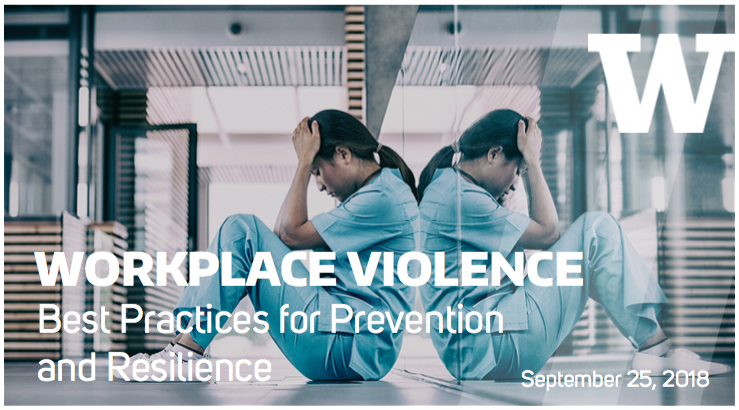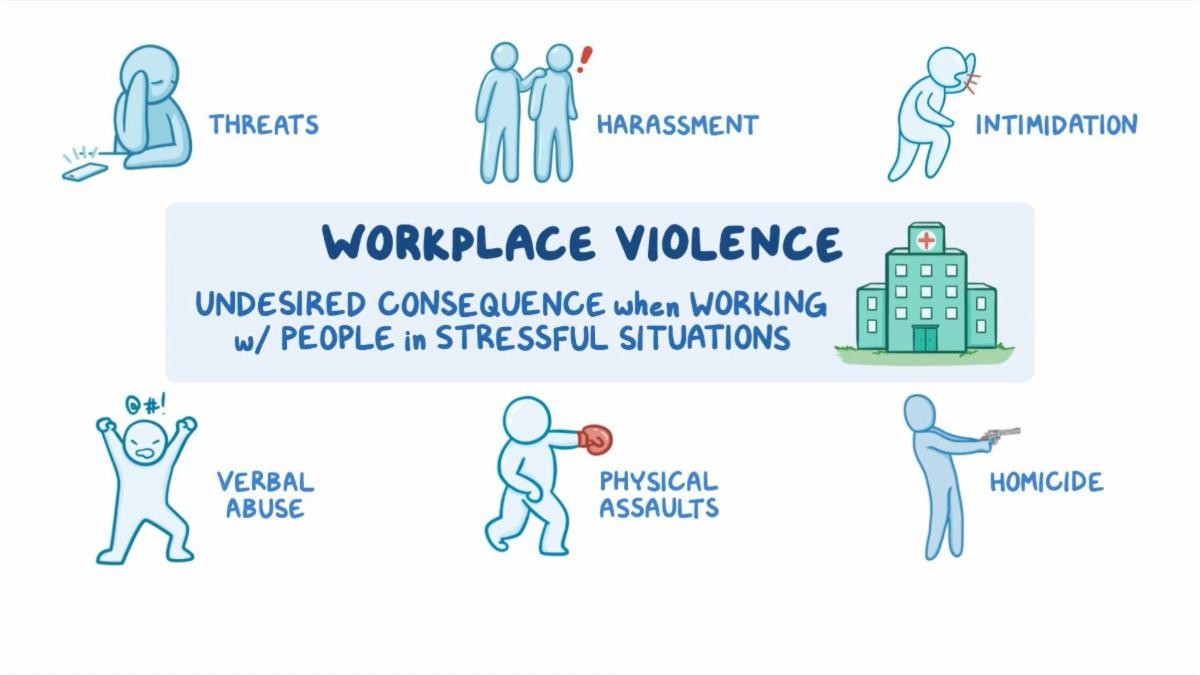Understanding Lawful Needs for California Workplace Violence Prevention Programs
Understanding Lawful Needs for California Workplace Violence Prevention Programs
Blog Article
Evaluating the Influence of Office Culture on the Success of Violence Avoidance Efforts and Staff Member Health
The junction of workplace society, violence prevention initiatives, and staff member wellness warrants cautious assessment, as these aspects jointly influence business success. A society that focuses on open communication and mental safety can empower employees to recognize and report possible dangers, consequently promoting a setting favorable to both mental health and reliable physical violence prevention techniques. The nuances of just how these elements communicate continue to be multifaceted and intricate. Understanding the specific devices at play can expose important insights that might notify future efforts and drive meaningful adjustment within companies. What underlying characteristics might be affecting these results?
Comprehending Workplace Culture
Regularly, workplace culture acts as the structure for employee communications and overall organizational actions. It incorporates the shared values, ideas, and techniques that shape the setting in which employees run. A positive workplace society promotes cooperation, respect, and open communication, while a negative culture may reproduce stress, distrust, and hostility. Recognizing workplace society is essential for organizations intending to implement effective violence avoidance strategies.

Organizations need to analyze their existing office culture to identify locations for enhancement. This assessment can include surveys, emphasis groups, or one-on-one conversations. By acknowledging the cultural dynamics at play, companies can carry out targeted interventions that advertise a much safer and extra respectful work atmosphere, inevitably lowering the threat of physical violence in the office.
Role of Staff Member Health
A favorable workplace society not only affects organizational habits but additionally dramatically impacts staff member wellness. When staff members feel valued and appreciated, their general work satisfaction boosts, leading to enhanced mental and psychological health. This, consequently, cultivates a feeling of belonging and loyalty, which is essential for long-lasting involvement and productivity.
Moreover, an encouraging cultural atmosphere advertises open interaction, enabling workers to seek and reveal problems help without fear of stigma. This visibility is critical in attending to concerns connected to tension, fatigue, and social conflicts, which can negatively impact both specific health and organizational consistency.
In addition, companies that focus on employee well-being frequently see decreased absence and turn over prices. Healthy and balanced employees are more resistant and better geared up to manage office obstacles, adding to an extra effective and secure labor force.
Spending in employee wellness with efforts such as wellness programs, mental health resources, and versatile functioning setups can produce a positive feedback loop, boosting both private gratification and cumulative business success (california workplace violence prevention). Eventually, prioritizing employee health is not merely a moral imperative; it is a strategic approach that benefits the entire company
Physical Violence Prevention Strategies
Executing effective physical violence avoidance methods is essential for preserving a safe and healthy and balanced workplace setting. Organizations should embrace an extensive approach that consists of policy development, staff member training, and aggressive interaction. Establishing clear office physical violence policies is the initial action, ensuring that all workers comprehend acceptable habits and the repercussions of violations.
Educating programs ought to be made to inform employees regarding recognizing caution signs of possible violence, problem resolution techniques, and emergency feedback procedures. Routine drills and simulations can enhance preparedness, cultivating a culture of understanding and responsibility.
Furthermore, cultivating open communication channels urges workers to report issues without anxiety of retaliation. This can be assisted in through anonymous coverage systems or routine responses sessions. Promoting a helpful office society that values regard and inclusivity can significantly reduce the danger of physical violence.
Organizations should also participate in regular evaluations of their workplace society and physical violence avoidance strategies, adapting them to have a peek at this website evolving requirements. By focusing on these methods, firms not just shield their employees yet also enhance overall well-being, eventually contributing to a much more efficient job atmosphere.
Determining Cultural Effect
Determining the effect of workplace culture on violence prevention efforts is vital for understanding the effectiveness of current approaches and recognizing locations for renovation - california workplace violence prevention. To attain this, companies need to utilize a multifaceted technique that integrates measurable and qualitative techniques. Surveys and assessments can collect data on employee assumptions of office safety, assistance, and inclusivity systems, while occurrence reports give concrete proof of physical violence events and their context within the business culture
In addition, focus groups and meetings can reveal much deeper insights into staff members' ideas, mindsets, and experiences surrounding physical violence prevention initiatives. Evaluating this qualitative information helps companies to identify social staminas and weak points that may either facilitate or impede effective avoidance strategies. Benchmarking versus sector criteria permits for relative evaluation, assisting organizations evaluate their efficiency loved one to peers.

Producing Encouraging Environments
Often promoting a supportive atmosphere within the office is crucial for effective physical violence avoidance. Such environments encourage employees to interact honestly concerning their experiences and concerns, thus recognizing possible issues before they intensify. A society of support improves depend on amongst group members, encouraging collaboration and positive analytic.
To develop an encouraging environment, organizations have to prioritize training programs that concentrate on dispute resolution, emotional intelligence, and active listening. These skills gear up workers to handle social partnerships constructively, lowering the likelihood of misunderstandings that might lead to violence - california workplace violence prevention. Additionally, executing mentorship programs can offer workers with assistance and peace of mind, adding to their overall health
Management plays an essential role fit a supportive office society. By modeling understanding habits and demonstrating a commitment view it now to employee well-being, leaders established a tone that motivates others to comply with suit. Regular responses devices, such as anonymous surveys, can likewise assist assess worker sentiment and emphasize locations for enhancement.
Ultimately, an encouraging environment not just alleviates the threat of physical violence yet also boosts employee morale, work complete satisfaction, and performance, enhancing the organization's dedication to promoting a safe and successful work environment.
Verdict
A positive office culture significantly affects both violence avoidance initiatives and worker health. By fostering open interaction and urging the reporting of worries, companies can enhance psychological health and task satisfaction amongst staff members. A helpful society reinforces the effectiveness of violence prevention methods by advertising the prompt recognition and attending to of caution signs. Ultimately, cultivating such an atmosphere offers as a critical foundation for successful interventions and contributes to the total success of the company.
The intersection of workplace society, physical violence avoidance initiatives, and worker wellness warrants cautious evaluation, as these elements collectively influence business success. A society that focuses on open interaction and emotional security can equip workers to determine and report prospective risks, thus fostering an environment conducive to both mental wellness and efficient violence prevention strategies.A positive workplace culture not only affects organizational habits but also considerably impacts staff member health. Surveys and assessments can gather data on staff member perceptions of office assistance, inclusivity, and safety systems, while case reports provide concrete evidence of violence incidents and their context within the organizational society.
A positive work environment society dramatically influences both physical violence prevention initiatives and employee wellness.
Report this page